- Désignation:
- SRS
- Groupe:
- Shorthair
- Catégorie:
- Principale
- Origine:
- USA
The origin of the breed
Selkirk Rex is a relatively new breed, with it’s first notion dated 1987, it was the year when a pet cat of an unknown origin was crossed with a rex cat. The only rex kitten in the resulting litter was named Miss de Pesto, and was given to a renowned persian cat fancier Jerry Newman from Montana. Mrs. Newman would undoubtedly cross the kitten in question with a black persian named Photo Finish, and the resulting litter contained three rex kittens, one of which was mated with mother and thus produced three more felines with coat configuration and coloration resembling the one of the poodle. This is how a new breed was born, and it was given a name standing for the local Selkirk mountains. However, there is a saying that the name does actually stand for a local garden. It were not only the persians who partook in the development of the breed, as if there were british, and exotic felines. What is sensational about the breed is the fact that it is the only known rex breed to date that bears a dominant curliness gene, which effectively allows you to produce rex litters from a single rex parent, unlike the common rex breeds which need both parents to have curled hair in order to reliably produce curlhair offspring.
The breed was admitted simultaneously by TICA, CFA and WCF and some independent organisations in 1992. Both shorthair and longhair variations are admitted. The breed has it’s peak popularity on it’s land of origin - the USA.
Appearance
Well build, hard frame and medium size make this a pretty massive feline weighing 7 - 11 lbs. The breed’s defining feature is the curled hair resembling the one of a sheep or a poodle. Selkirk rexes are the most curly of all curlhair breeds.
Head: Round and wide, medium size yet massive looking. Round forehead and full (sometimes flappy) cheeks. Short and square muzzle, with a smooth, stopless transition to a concave profiled nose. The profile is defined by heavy jaws, with curly whickers and brows being the accents.
Eyes: Large, round shaped and wide set. The iris should be solid in colour and go together with the coat.
Ears: Medium sized, set wide apart and broad at base, with rounded tips. The auricle hairs are curving.
Neck: Medium sized, set wide apart and broad at base, with rounded tips. The auricle hairs are curving.
Body: Heavy, thick and stout, rectangular formated, with developed musculature and bone structure.
Legs: Short and stout, medium thickness. Bone and muscle structure range from average to very well developed.
Paws: Large and round.
Tail: Medium length, thick, with a round tip.
Coat: Short and thick, yet soft and plushy to the touch, wavy with occasional stray curls throughout the body. The curliness may change with the climate, time of the year and hormones, the latter affects selkirk females to a great extent. The coat develops fully by the age of 2, kittens are born with a very curly coat, which quickly loses this trait and only regains it by 8-10 month of life.
Colours: Selkirk rexes may have any colour, although clear and bold colours are preferred. TICA also allows for white medallions.
Flaws: An abrupt "stop" on muzzle profiele
Disqualification on shows: Strabismus, tail knots.
Amputated claws: Ампутированные когти, крипторхизм, глухота.
Character traits and features
Selkirk rex is defined by it’s calm, level temper, it is both patient, obedient and friendly. It’s constant need for human attention is compensated by it’s playfulness and ease of dealing with other cats and even dogs. All in all, it is tender and pleasing to interact with. This breed is well adapted for living in a flat and is resistant to cold. It’s average lifespan is 15 - 20 years.
Maintenance and care
First of all, these cats do need to be brushed on a daily basis, as if their coat is soft and dense, and it is backed by a hefty undercoat. No wonder it is going to wool easily. You don’t have to worry about your feline loosing it’s hair, it may only become less visible, which is something you can fix with an atomised water treatment followed by a friendly rumble. Shorthair selkirk is less complex to maintain, as if it’s coat is not so prone to clotting. These felines need to be brushed on a daily basis too, and the rough brush following the hair alignment does it best.
Nutrition choices
Balanced rations are required.
Selection and breeding
Allowed crossings: British shorthair, non-extremal type Persian and Exotic.
Breeds relative or derived from Selkirk Rex Shorthair: none
Alternative and obsolete breed names
Sheep Cat.
